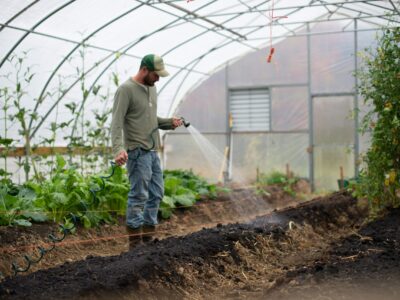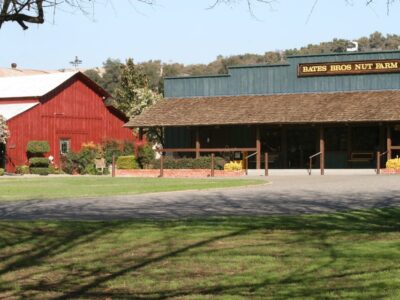With agriculture contributing to at least 10% of the U.S.’s greenhouse gas emissions, farmers are taking a hard look at how they can shift their practices to help the country reach its 2050 net-zero emissions goals. Saving Tomorrow’s Agriculture Resources (STAR), a free tool developed in 2017 “by farmers and for farmers,” is a unique way for farmers and landowners to improve sustainable practices and soil health.
Created through the Illinois Department of Agriculture and Illinois Environmental Protection Agency, “STAR is a farmer-developed tool to avoid the pitfalls of typically complex, lengthy certification programs that farmers and landowners are accustomed to,” David Nguyen, STAR coordinator.
Nguyen explained how easy using STAR is. A farmer simply fills out a free, five-minute online or written questionnaire that addresses their land practices, including tillage, crop rotation, nutrient management, and soil sampling. The farmer then receives a one to five-star rating on how those chosen practices improve water quality and soil health. A five star goes to the best practices, with one star indicating areas that need work. An also-free improvement plan is then readily available.
The hope in time is that the STAR program will help reduce nutrient and soil losses farm by farm and improve the health of adjacent watersheds.
“STAR’s rating system heavily emphasizes water quality impacts,” Nguyen said. “The most common field practices that five STAR farmers implement involve no-till management, planting multiple winter-hardy cover crops, and applying nutrients like phosphorus at or below removal rates. These practices ensure low disturbance of soil and decrease runoff.”
The results are significant. In the 2021 STAR Annual Report, participating farmers kept 70,000 tons of sediment and 100,000 pounds of polluting phosphorus and nitrate-nitrogen out of Illinois waterways. With conventional farming practices like heavy tilling contributing to nearly a third of the Midwest topsoil being lost, changing to sustainable STAR farming practices has a huge impact.
Sustainable farming practices such as using cover crops, reducing plowing, and using fewer chemical fertilizers mean far less soil loss and less polluting soil runoff. More soil in the ground means more carbon stays there.
The STAR program not only improves soil and watershed health but also promotes a positive image of agriculture and supports the work of soil and water conservation districts across the country. Additionally, it seeks to inspire other farmers and landowners to rate their practices and make improvements when needed.
Nguyen has high hopes for the STAR program, which operates in Illinois, Missouri, Colorado, Iowa, and Indiana.
“ We are working to establish an even stronger partnership network throughout the Midwest and financially reward farmers for their efforts,” he said.
“We would love to see STAR spread to other states and have interest from a number of them. As we create partnerships and obtain funding, this will also help with establishing broader Pay-for-Performance programs, where farmers who enroll fields with us can get paid for improving [their] STAR ratings.”
The program also succeeds because farmers created the process and stay continually involved. “Sometimes getting advice from the government or from getting it online — sometimes that’s not what a farmer needs,” said Paige Buck of the United States Department of Agriculture Natural Resources Conservation Service in Illinois. “What they need to do is they need to hear it from another farmer.”





